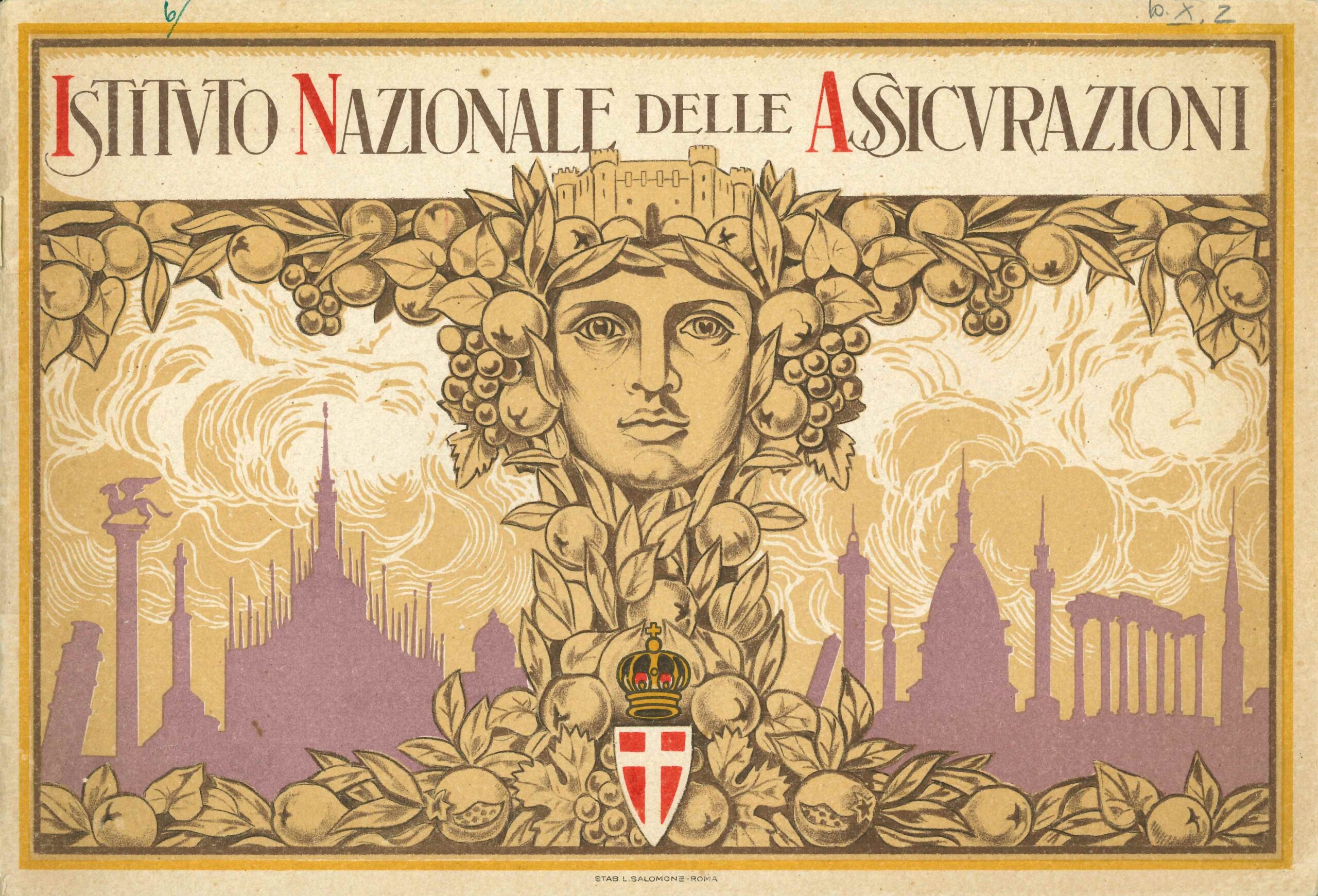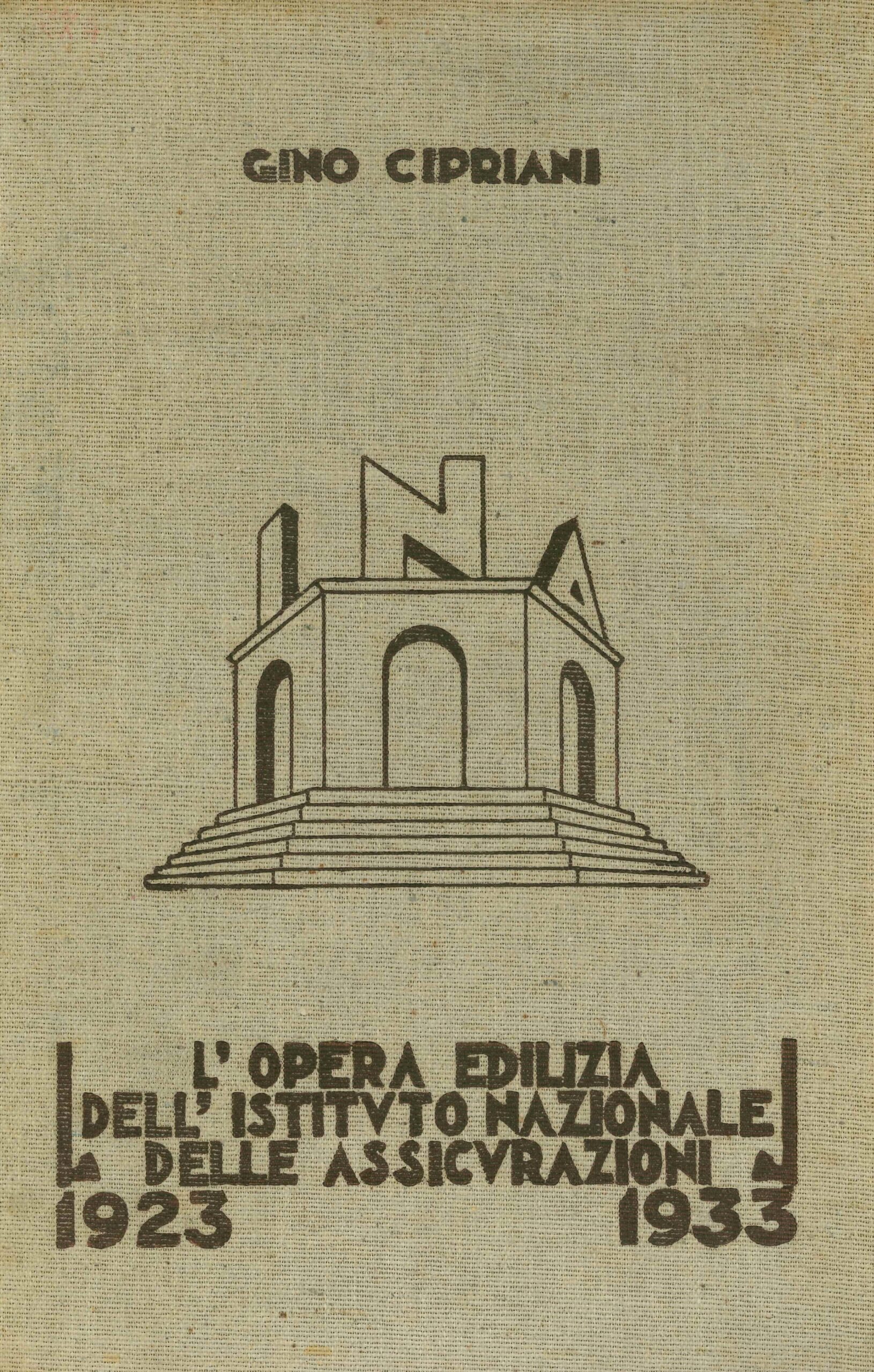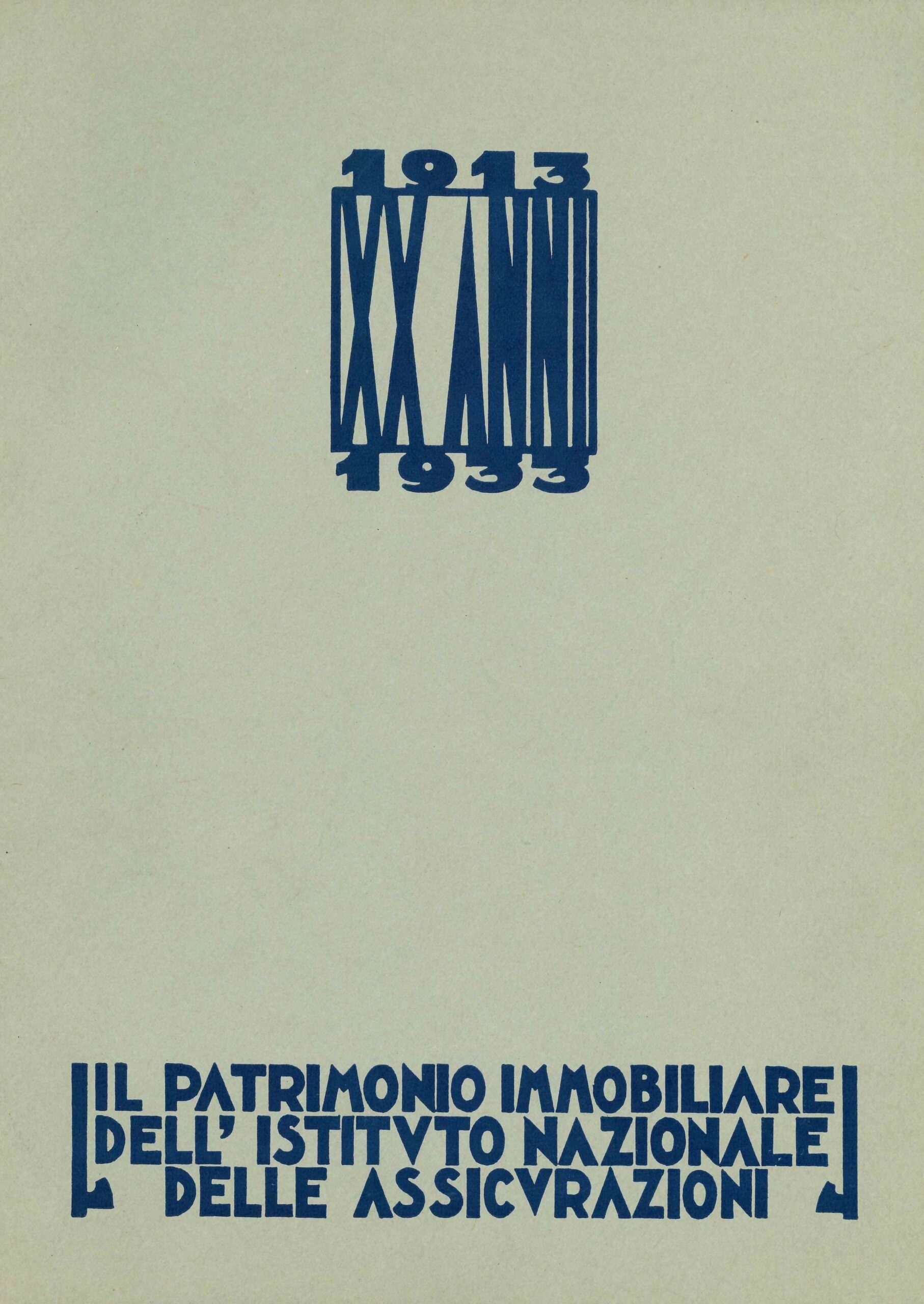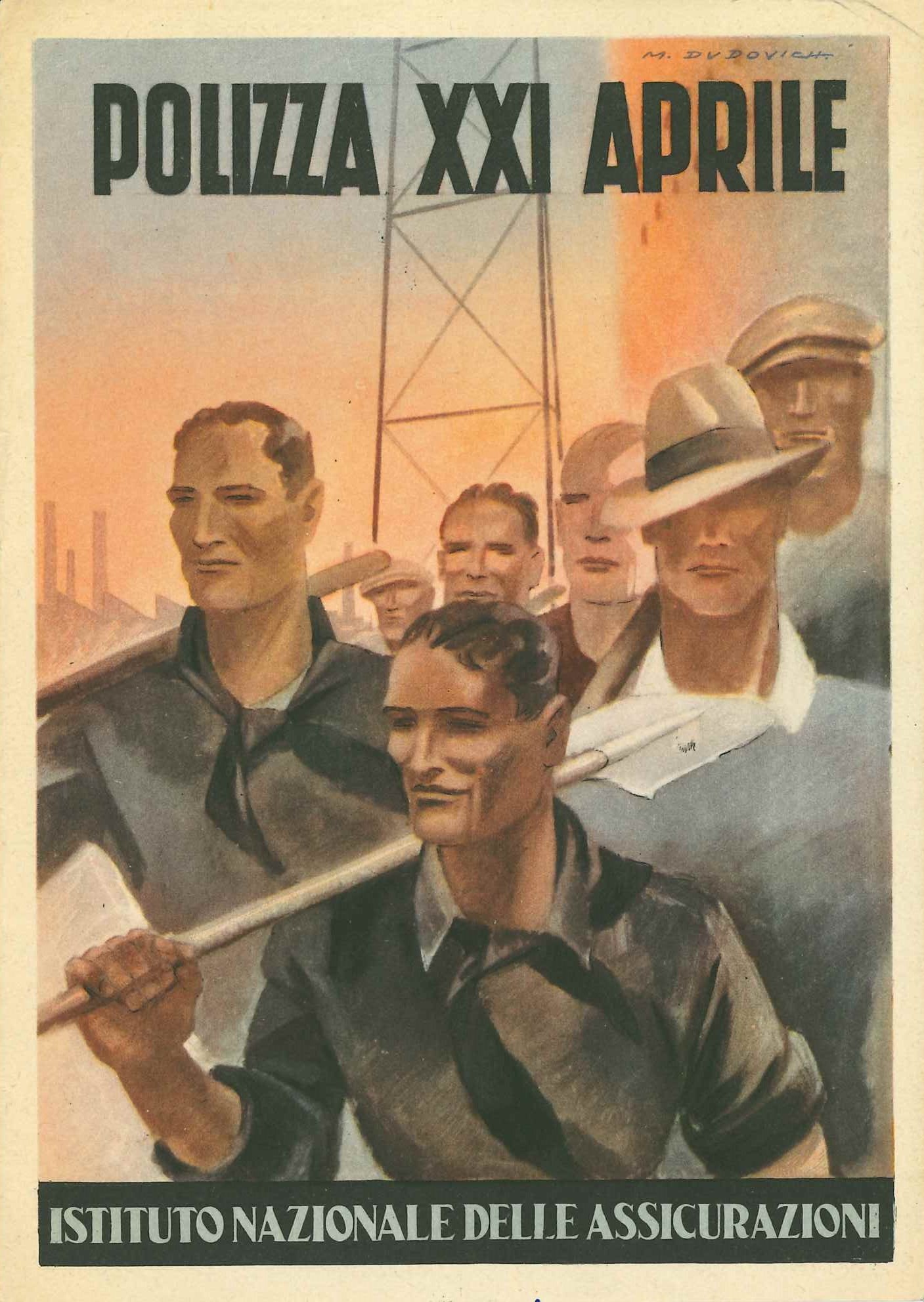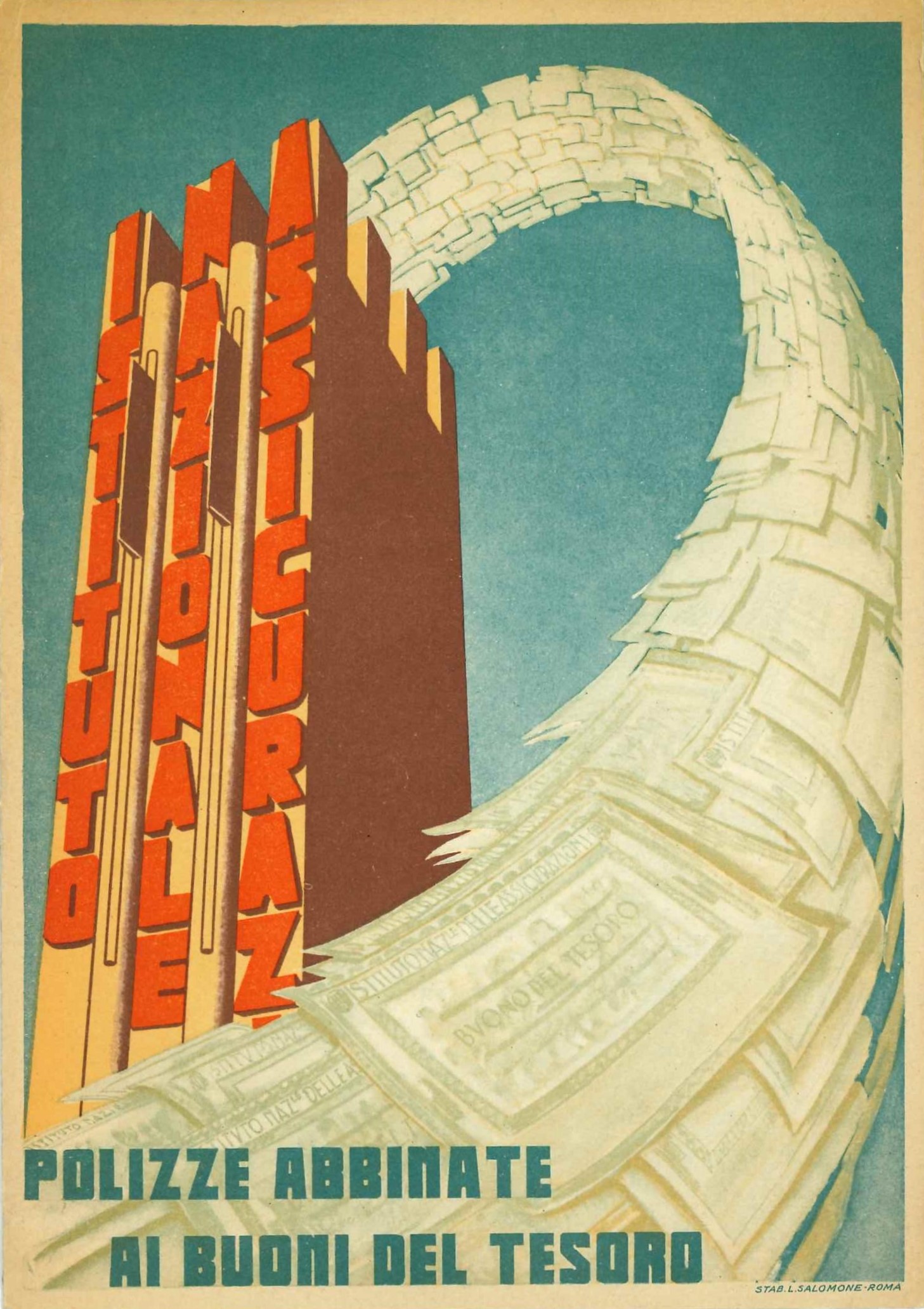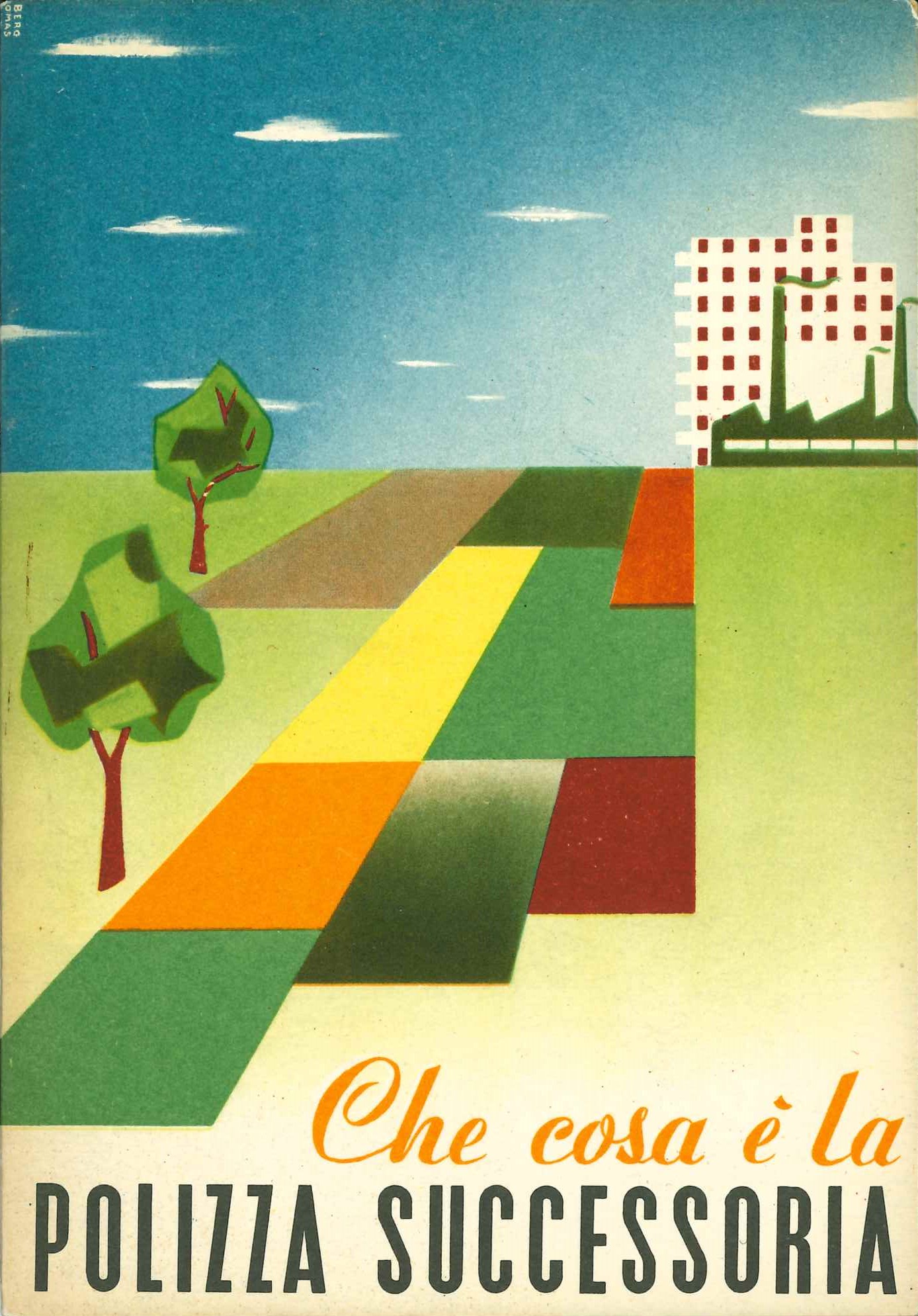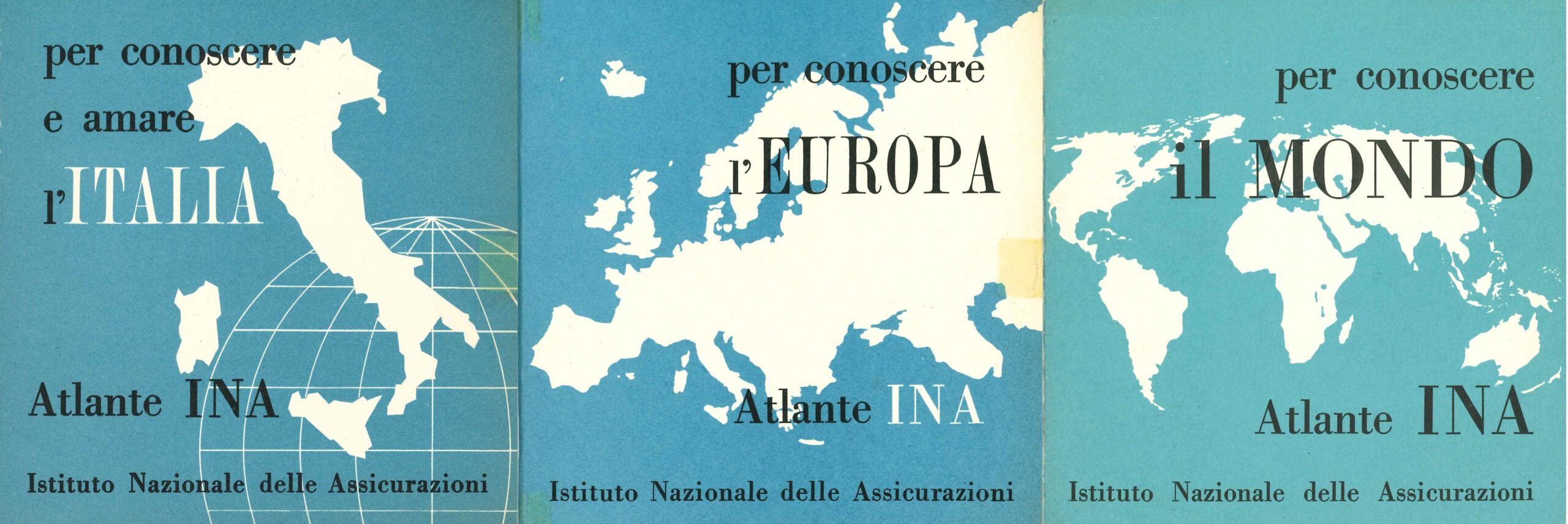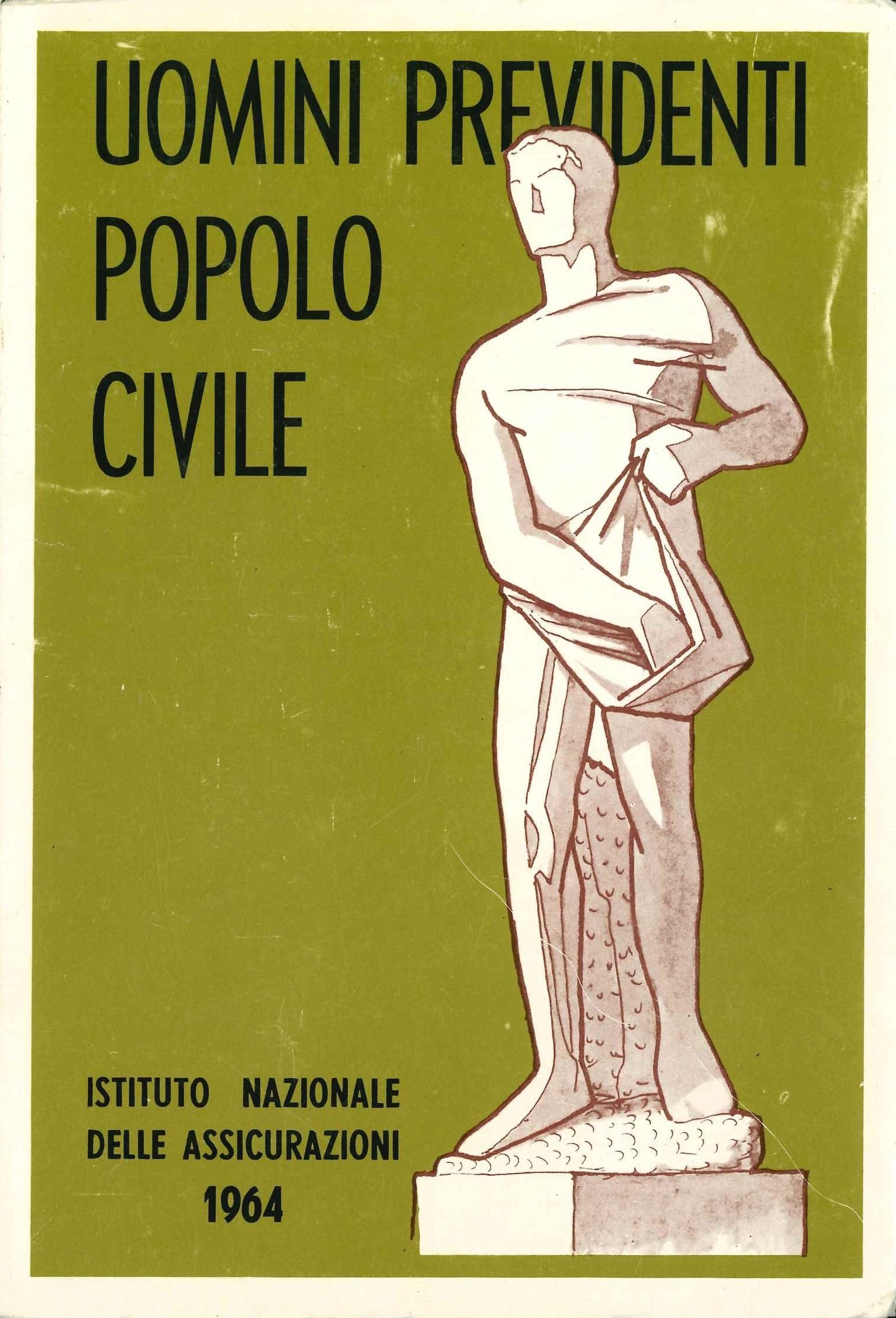INA: The Golden Years for Small Adverts
28 July 2022
There are two periods in the history of the Istituto Nazionale delle Assicurazioni (INA) in which small adverts – leaflets, pamphlets, booklets and brochures designed to publicise the different facets of the state insurance entity’s offerings – reach the greatest audience and the highest quality, both for their variety as well as the collaboration with leading artists and the presence of important illustrators: the fascist period and the years of the economic boom.
In both of these moments, the subjects of this small but effective form of advertising included the concept of welfare, the policy offerings – both regular as well as so-called “popular policies” – and the INA’s significant real estate holdings, among other important matters. No less importantly, they also included illustrations entrusted to some of the leading names of their day.
Each period has its own defining features: in the two decades under fascism, popular insurance was held up as a way in which the regime promoted welfare as well as the accumulation of small amounts of capital which could then be reinvested, for example into modernising the agricultural workplace by purchasing new farm machinery (with the Battle for Grain lurking in the background). The pamphlets and booklets were designed to introduce and publicise the different forms of popular insurance policies, such as the XXI April policy – intended for the working classes and created together with the workers’ trade union – the Rurale or the Balilla, with covers embellished with attention-grabbing illustrations by Marcello Dudovich.
Still within that same period, the real estate holdings are what come to symbolise the solidity of the organisation as a financial force within the fascist regime: in a slim volume from 1933, the Istituto’s construction projects in Rome, elsewhere in Italy and in the colonies are celebrated with a special edition of the Opere Pubbliche magazine, packed full of information, plans and images, created immediately after construction finished. Among these, the building on Viale Bruno Buozzi in Rome, the skyscraper designed by Marcello Piacentini in Brescia, and the INA building in Piazza Castello in Tripoli are of particular note. The text is supplied by the architect Gino Cipriani, head of the technical-real estate services of the Istituto from 1924 to 1955.
With their much more sober style, the texts and the images from the 1950s and ‘60s are not short of interesting details: welfare is portrayed as a voluntary gesture that aligns with the new social structures of the democratic state. Insurance is still pitched at all social classes: there is an office workers’ policy and an artisans’ policy, but also a popular policy for labourers called “Lavoro e Famiglia” (Work and Family). One subject that gains prominence in the INA’s messaging is that of education, through INA-Scuola. Atlases of Europe and the world are distributed, but even more popular are the maps of the Italian peninsula produced by the Agostini Institute of Geography, “to encourage a knowledge and love of Italy”. A booklet published by the Presbitero di Milano also offers help with grammar.
Various booklets are illustrated by a well-known illustrator within the Istituto: Italo Bergomas.
In the early 60s attention turns to a new event: the fiftieth anniversary of the INA (1913-1963): exhibitions, concerts and conventions are organised to celebrate the occasion. A booklet printed for the occasion recounts the origins of the Institute and the history of insurance in Italy, before and after the birth of the INA, while simultaneously exalting welfare as a proud voluntary statement of protection of the family: it is no coincidence that Uomini previdenti, popolo civile – as the book was called – was dedicated “to the fathers and the fathers-to-be”.
The database contains an important selection of leaflets, pamphlets, booklets and brochures that have been fully digitised and offer a look back through the history of two important periods in Italian history from the perspective of the insurance industry. These two series are preceded by the few remaining booklets regarding the initial years of the INA.
